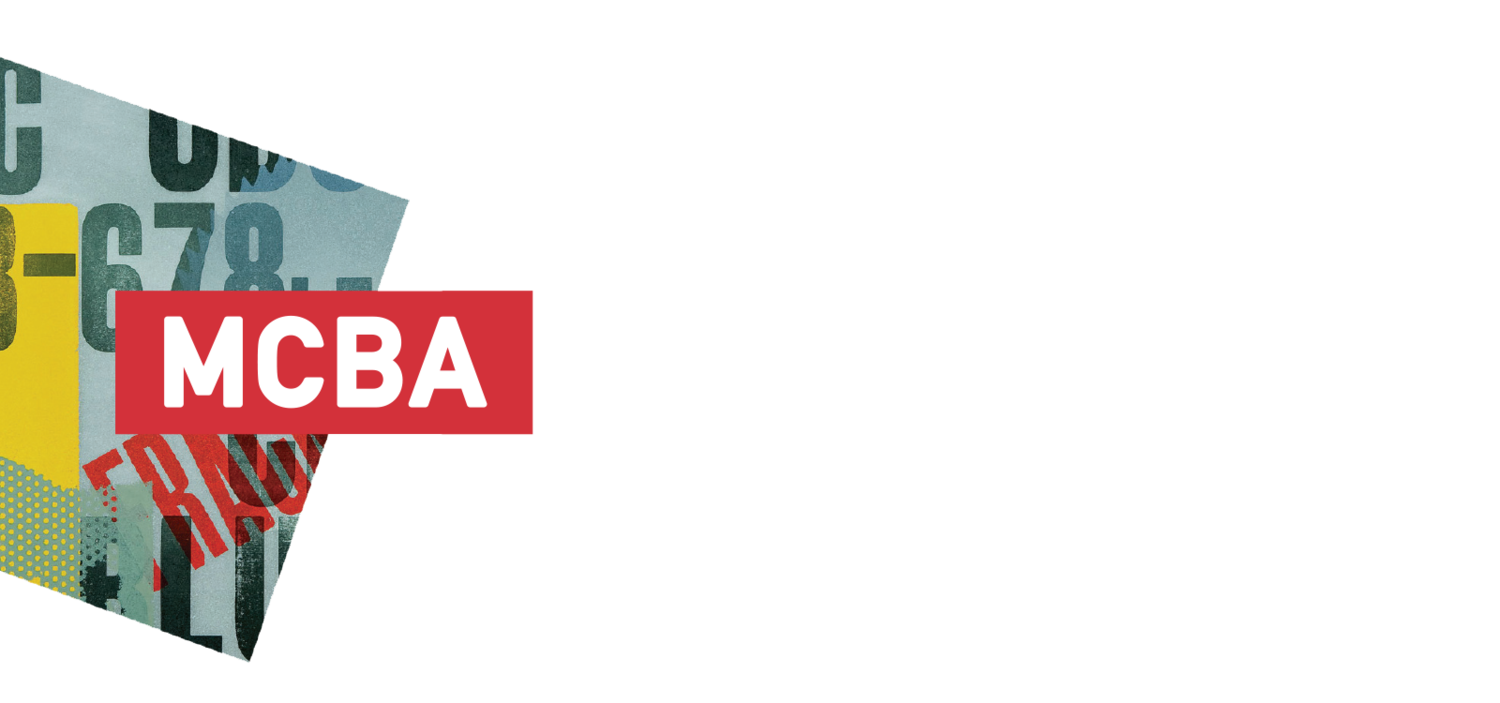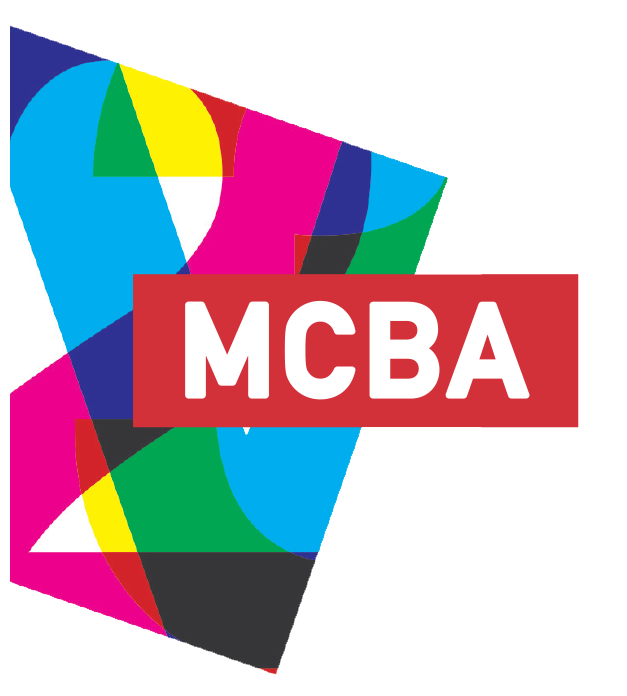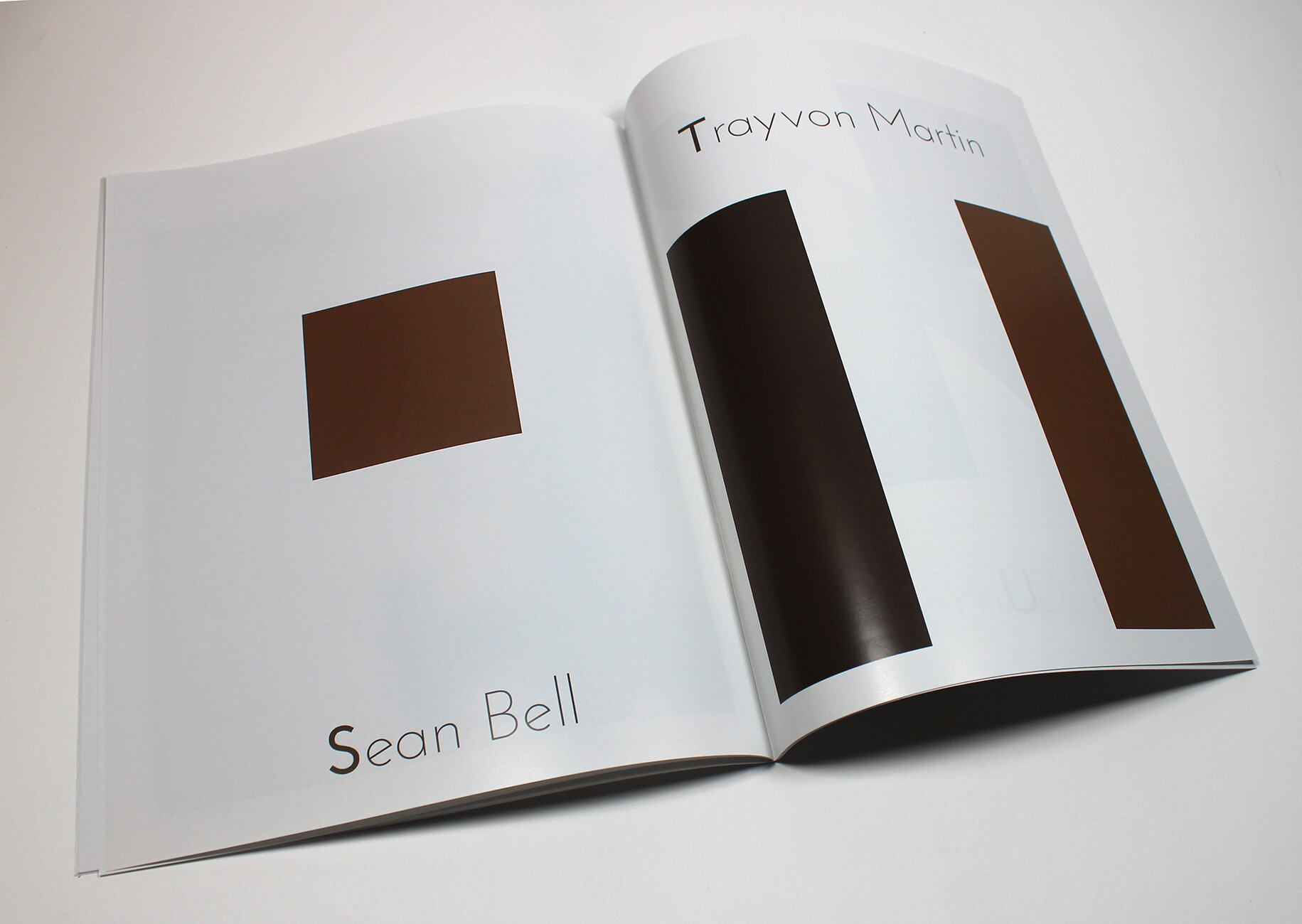2^11 Artist's Book by Veronika Schäpers
This piece is one of five finalists for the 2024 MCBA Prize, and will be included in the 2024 MCBA Prize Exhibition from August 17th - October 12th, 2024. Pieces purchased before the end of the exhibition will ship on October 18th, 2024.
Additionally, this piece is featured in the August 2024 issue of The Fore Edge, a quarterly newsletter from MCBA that highlights new artists’ books and zines for collections, universities, and libraries. If you are interested in receiving this newsletter, there is a sign up available here.
“As with all my projects, the starting point for 211 is a literary text. A short Japanese story that fascinated me so much over ten years ago that I wanted to use it for an artist‘s book and have it translated into German. Unfortunately, when I asked for permission to print a small edition of the original text and to translate it into German, a number of problems arose. The publisher, who owned the rights to the original text, at first stubbornly ignored all requests, only to justify its refusal by saying that it saw no point in such a small artistic publication. In the next step, the translator and I contacted the author‘s heir personally, but despite several attempts, there was no response from her either. So, for the first and so far only time, I had to put a project I had started back in the drawer.
In the summer of 2022, I was sorting through my archive and came across the extensive preparatory work for the project again, which still fascinated me and at the same time awakened my ambition to circumvent the printing permission that was never granted. I began with various attempts to edit the text to produce a readable result without infringing the copyright and in the end decided to have the text professionally encrypted. Jörn Müller-Quade, Professor of Cryptology at the Karlsruhe Institute of Technology, did this for me. The original Japanese text and its English translation went through an extensive process, which in the language of cryptologists can be simplified (!) as follows:
1. two passwords from two independent persons are read in and suitably combined (by chance). A binary key is created.
2. the text is read in and is now a binary object in the memory.
3. the text is compressed. As compression is inefficient for short inputs, a comparison is made as to whether the compressed text (which is also a binary object) or the (binary) uncompressed text is shorter. The shorter variant is processed further.
4. a separate password is derived for this plain text and encryption is performed. The ciphertext is binary.
5. the ciphertext is divided into 11-bit blocks. In an (English or Japanese) dictionary there are 2048 = 2^11 entries. For each block, the 11-bit value is interpreted as the number n and the nth word of the dictionary is output.
The result is a long sequence of individual terms. They are printed in the book in a monospace font and have no relation to each other. Precisely because of this, they exert a great attraction and release a series of associations and suggestions in the reader or viewer.
The same applies to the illustrations, ten collages of small or large objects, all of which are described in the original text. They are as faithful an image as possible of what I imagined while reading. The various objects were photographed and, without taking the proportions into account, I scaled them to the same format - similar to the non-proportional monospace font - and then cut them up and collaged them. As with the encrypted text, individual elements can be read, sometimes resulting in unusual and stimulating combinations, but without revealing the original story.
A third section deals with colors, which are mentioned in the original text. Twenty shades of color are printed as individual blocks spread over four pages; here, too, they are the shades I imagined when I read the text. As with the objects, they reflect my subjective perception.
All three components, illustration, text and color blocks, are printed on different Japanese papers that best match the different character of the prints. The book is bound in a semi-transparent cover with the author and title embossed in code. The book is also protected by a semi-transparent cover with parts of a two-point perspective view of a room. This also creates a link to the story, just like the illustrations and colors, which in turn are very subjective.
The process of encrypting and deconstructing is reflected in the puzzle case. A three-part structure that is held together by magnets and is intended to be confusing when disassembled. The very long encrypted title is replaced by the number 2^11, which indicates the number of terms in the dictionary used to translate the encrypted binary code into individual words.
The book is intended to exist as an independent project, detached from the original, and to stimulate reflection on perception, terminology and interpretation. The original text serves only as a starting point from which something new emerges and no longer plays a role in Book 2^11.” -Veronika Schäpers
13.8” x 8.7” x 0.6”
*Consignment item. Not eligible for 10% membership discount. All consignment purchases are final and non-refundable once shipped.
This piece is one of five finalists for the 2024 MCBA Prize, and will be included in the 2024 MCBA Prize Exhibition from August 17th - October 12th, 2024. Pieces purchased before the end of the exhibition will ship on October 18th, 2024.
Additionally, this piece is featured in the August 2024 issue of The Fore Edge, a quarterly newsletter from MCBA that highlights new artists’ books and zines for collections, universities, and libraries. If you are interested in receiving this newsletter, there is a sign up available here.
“As with all my projects, the starting point for 211 is a literary text. A short Japanese story that fascinated me so much over ten years ago that I wanted to use it for an artist‘s book and have it translated into German. Unfortunately, when I asked for permission to print a small edition of the original text and to translate it into German, a number of problems arose. The publisher, who owned the rights to the original text, at first stubbornly ignored all requests, only to justify its refusal by saying that it saw no point in such a small artistic publication. In the next step, the translator and I contacted the author‘s heir personally, but despite several attempts, there was no response from her either. So, for the first and so far only time, I had to put a project I had started back in the drawer.
In the summer of 2022, I was sorting through my archive and came across the extensive preparatory work for the project again, which still fascinated me and at the same time awakened my ambition to circumvent the printing permission that was never granted. I began with various attempts to edit the text to produce a readable result without infringing the copyright and in the end decided to have the text professionally encrypted. Jörn Müller-Quade, Professor of Cryptology at the Karlsruhe Institute of Technology, did this for me. The original Japanese text and its English translation went through an extensive process, which in the language of cryptologists can be simplified (!) as follows:
1. two passwords from two independent persons are read in and suitably combined (by chance). A binary key is created.
2. the text is read in and is now a binary object in the memory.
3. the text is compressed. As compression is inefficient for short inputs, a comparison is made as to whether the compressed text (which is also a binary object) or the (binary) uncompressed text is shorter. The shorter variant is processed further.
4. a separate password is derived for this plain text and encryption is performed. The ciphertext is binary.
5. the ciphertext is divided into 11-bit blocks. In an (English or Japanese) dictionary there are 2048 = 2^11 entries. For each block, the 11-bit value is interpreted as the number n and the nth word of the dictionary is output.
The result is a long sequence of individual terms. They are printed in the book in a monospace font and have no relation to each other. Precisely because of this, they exert a great attraction and release a series of associations and suggestions in the reader or viewer.
The same applies to the illustrations, ten collages of small or large objects, all of which are described in the original text. They are as faithful an image as possible of what I imagined while reading. The various objects were photographed and, without taking the proportions into account, I scaled them to the same format - similar to the non-proportional monospace font - and then cut them up and collaged them. As with the encrypted text, individual elements can be read, sometimes resulting in unusual and stimulating combinations, but without revealing the original story.
A third section deals with colors, which are mentioned in the original text. Twenty shades of color are printed as individual blocks spread over four pages; here, too, they are the shades I imagined when I read the text. As with the objects, they reflect my subjective perception.
All three components, illustration, text and color blocks, are printed on different Japanese papers that best match the different character of the prints. The book is bound in a semi-transparent cover with the author and title embossed in code. The book is also protected by a semi-transparent cover with parts of a two-point perspective view of a room. This also creates a link to the story, just like the illustrations and colors, which in turn are very subjective.
The process of encrypting and deconstructing is reflected in the puzzle case. A three-part structure that is held together by magnets and is intended to be confusing when disassembled. The very long encrypted title is replaced by the number 2^11, which indicates the number of terms in the dictionary used to translate the encrypted binary code into individual words.
The book is intended to exist as an independent project, detached from the original, and to stimulate reflection on perception, terminology and interpretation. The original text serves only as a starting point from which something new emerges and no longer plays a role in Book 2^11.” -Veronika Schäpers
13.8” x 8.7” x 0.6”
*Consignment item. Not eligible for 10% membership discount. All consignment purchases are final and non-refundable once shipped.
This piece is one of five finalists for the 2024 MCBA Prize, and will be included in the 2024 MCBA Prize Exhibition from August 17th - October 12th, 2024. Pieces purchased before the end of the exhibition will ship on October 18th, 2024.
Additionally, this piece is featured in the August 2024 issue of The Fore Edge, a quarterly newsletter from MCBA that highlights new artists’ books and zines for collections, universities, and libraries. If you are interested in receiving this newsletter, there is a sign up available here.
“As with all my projects, the starting point for 211 is a literary text. A short Japanese story that fascinated me so much over ten years ago that I wanted to use it for an artist‘s book and have it translated into German. Unfortunately, when I asked for permission to print a small edition of the original text and to translate it into German, a number of problems arose. The publisher, who owned the rights to the original text, at first stubbornly ignored all requests, only to justify its refusal by saying that it saw no point in such a small artistic publication. In the next step, the translator and I contacted the author‘s heir personally, but despite several attempts, there was no response from her either. So, for the first and so far only time, I had to put a project I had started back in the drawer.
In the summer of 2022, I was sorting through my archive and came across the extensive preparatory work for the project again, which still fascinated me and at the same time awakened my ambition to circumvent the printing permission that was never granted. I began with various attempts to edit the text to produce a readable result without infringing the copyright and in the end decided to have the text professionally encrypted. Jörn Müller-Quade, Professor of Cryptology at the Karlsruhe Institute of Technology, did this for me. The original Japanese text and its English translation went through an extensive process, which in the language of cryptologists can be simplified (!) as follows:
1. two passwords from two independent persons are read in and suitably combined (by chance). A binary key is created.
2. the text is read in and is now a binary object in the memory.
3. the text is compressed. As compression is inefficient for short inputs, a comparison is made as to whether the compressed text (which is also a binary object) or the (binary) uncompressed text is shorter. The shorter variant is processed further.
4. a separate password is derived for this plain text and encryption is performed. The ciphertext is binary.
5. the ciphertext is divided into 11-bit blocks. In an (English or Japanese) dictionary there are 2048 = 2^11 entries. For each block, the 11-bit value is interpreted as the number n and the nth word of the dictionary is output.
The result is a long sequence of individual terms. They are printed in the book in a monospace font and have no relation to each other. Precisely because of this, they exert a great attraction and release a series of associations and suggestions in the reader or viewer.
The same applies to the illustrations, ten collages of small or large objects, all of which are described in the original text. They are as faithful an image as possible of what I imagined while reading. The various objects were photographed and, without taking the proportions into account, I scaled them to the same format - similar to the non-proportional monospace font - and then cut them up and collaged them. As with the encrypted text, individual elements can be read, sometimes resulting in unusual and stimulating combinations, but without revealing the original story.
A third section deals with colors, which are mentioned in the original text. Twenty shades of color are printed as individual blocks spread over four pages; here, too, they are the shades I imagined when I read the text. As with the objects, they reflect my subjective perception.
All three components, illustration, text and color blocks, are printed on different Japanese papers that best match the different character of the prints. The book is bound in a semi-transparent cover with the author and title embossed in code. The book is also protected by a semi-transparent cover with parts of a two-point perspective view of a room. This also creates a link to the story, just like the illustrations and colors, which in turn are very subjective.
The process of encrypting and deconstructing is reflected in the puzzle case. A three-part structure that is held together by magnets and is intended to be confusing when disassembled. The very long encrypted title is replaced by the number 2^11, which indicates the number of terms in the dictionary used to translate the encrypted binary code into individual words.
The book is intended to exist as an independent project, detached from the original, and to stimulate reflection on perception, terminology and interpretation. The original text serves only as a starting point from which something new emerges and no longer plays a role in Book 2^11.” -Veronika Schäpers
13.8” x 8.7” x 0.6”
*Consignment item. Not eligible for 10% membership discount. All consignment purchases are final and non-refundable once shipped.
Educated in Germany and Switzerland Veronika Schäpers (she/her) moved to Tokyo/Japan in 1997 where she started her career as an independent artist. In 2012 she moved to Berlin and lives now in Karlsruhe/Germany. Veronika’s work is focussing on the observation of social phenomena, often in foreign cultures. With all the rigor and mastery of traditional book arts skills such as printing, binding, and graphic design, she also has a poet’s cadence and a journalist’s probing curiosity. By working with writers from east and west as well as her exceptional use of refined materials and techniques influenced by her long living in Japan,
she produces art work that stimulates all our senses. Veronika Schäpers has won several prizes and her work is in many renowned collections all around the world.
Instagram: @VeronikaSchaepers































